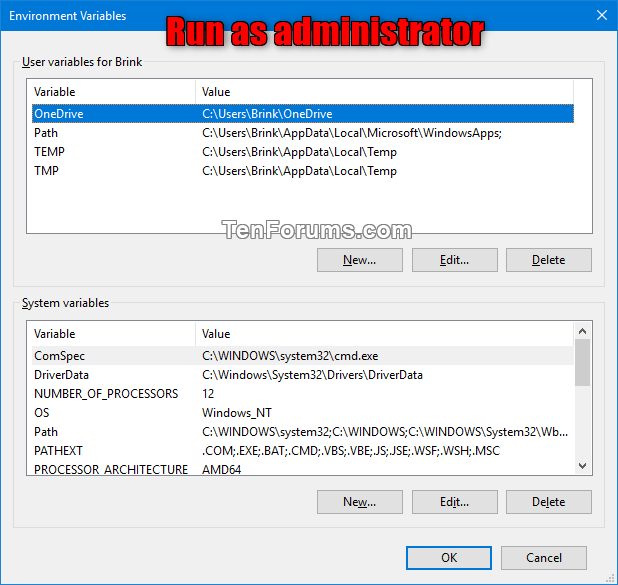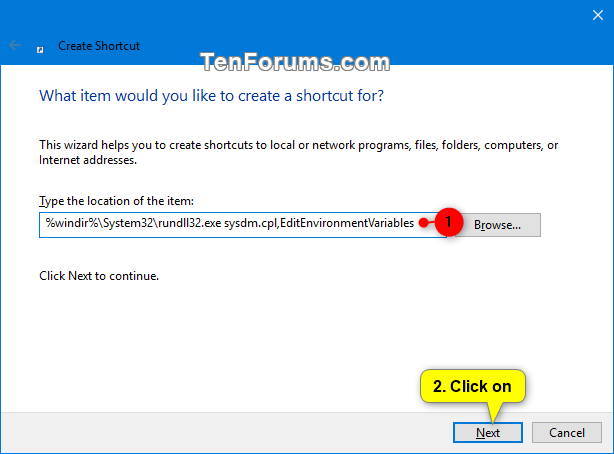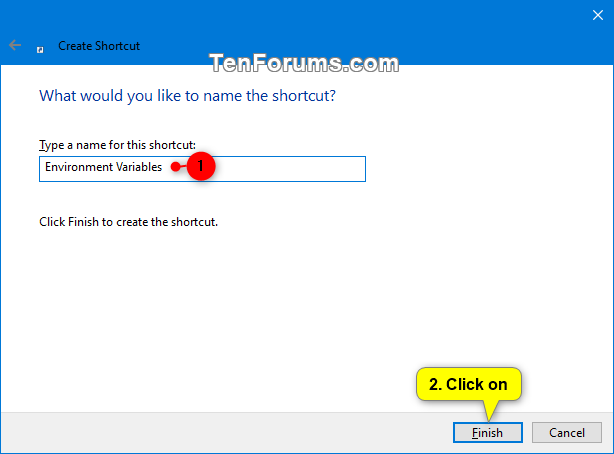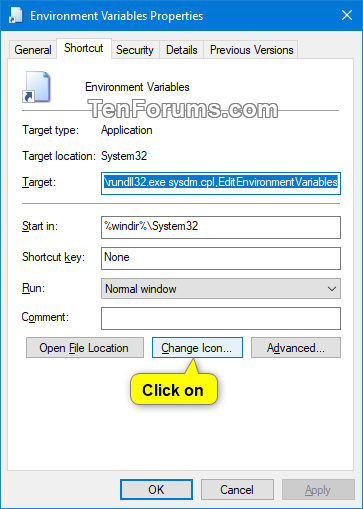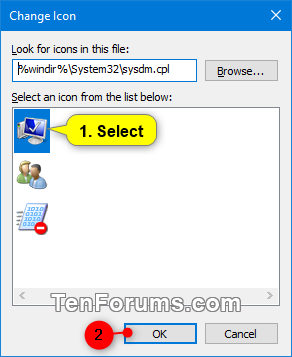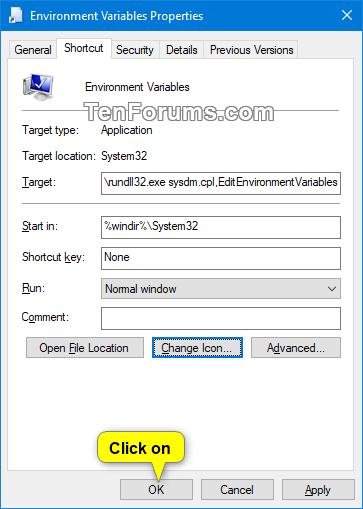How to Create Environment Variables Shortcut in Windows
Environment variables are a set of dynamic named values that can affect the way running processes will behave on a computer. The variables can be used both in scripts and on the command line. Environment variables makes it easy when certain standard directories and parameters need to be referenced but where the actual locations or names can vary from computer to computer.
The variable (ex: "%UserProfile%") is used as a type of shortcut of the value (ex: "C:\Users\<username>").
There are two types of environment variables: user environment variables (set only for current user) and system environment variables (set for all users).
This tutorial will show you how to create or download an Environment Variables shortcut in Windows 7, Windows 8, and Windows 10.
To set new, edit, or delete system variables, you would need to use Run as administrator on the Environment Variables shortcut.
To set new, edit, or delete user variables for the current user, you can just open the Environment Variables shortcut.
Contents
- Option One: To Download an Environment Variables Shortcut
- Option Two: To Manually Create an Environment Variables Shortcut
EXAMPLE: Environment Variables
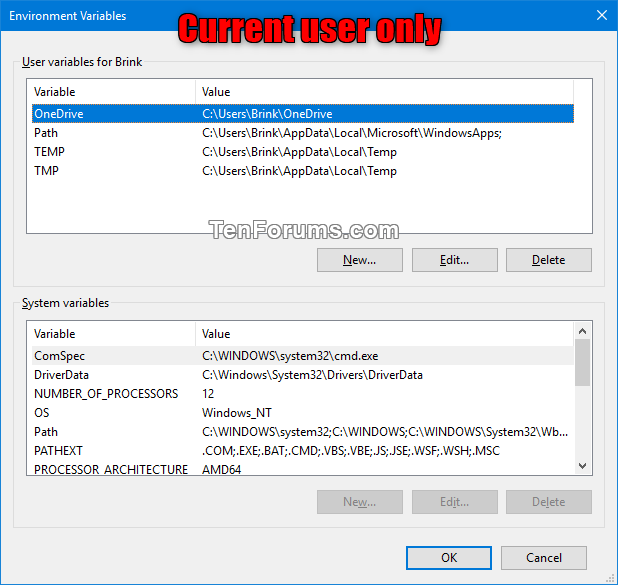
1 Click/tap on the Download button below to download the .zip file below.
2 Save the .zip file to your desktop.
3 Unblock the .zip file..
4 Open the .zip file, and extract (drag and drop) the shortcut to your desktop.
5 You can Pin to Taskbar, Pin to Start, add to All apps, add to Quick Launch, assign a keyboard shortcut to, or move this shortcut to where you like for easy use.
6 When finished, you can delete the downloaded .zip file if you like.
1 Right click or press and hold on an empty area on your desktop, and click/tap on New and Shortcut.
2 Copy and paste the location below into the location area, and click/tap on Next. (see screenshot below)
%windir%\System32\rundll32.exe sysdm.cpl,EditEnvironmentVariables
3 Type Environment Variables for the name, and click/tap on the Finish button. (see screenshot below)
You could name this shortcut anything you would like though.
4 Right click or press and hold on the new Environment Variables shortcut, and click/tap on Properties.
5 Click/tap on the Shortcut tab, and click/tap on the Change Icon button. (see screenshot below)
6 In the line under "Look for icons in this file", copy and paste the location below, and press Enter. (see screenshot below)
%windir%\System32\sysdm.cpl
7 Select the icon highlighted in blue above, and click/tap on OK. (see screenshot above)
You could use any icon that you would like instead though.
8 Click/tap on OK. (see screenshot below)
9 You can Pin to Taskbar, Pin to Start, add to All apps, add to Quick Launch, assign a keyboard shortcut to, or move this shortcut to where you like for easy use.
That's it,
Shawn
Related Tutorials
- Complete List of Environment Variables in Windows 10
- How to Set New User and System Environment Variables in Windows
- How to Edit User and System Environment Variables in Windows
- How to Delete User and System Environment Variables in Windows
- How to Add Environment Variables Context Menu in Windows 10
Create Environment Variables Shortcut in Windows
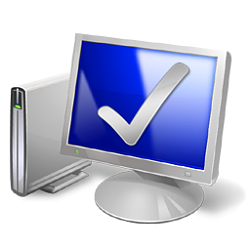
Create Environment Variables Shortcut in Windows
How to Create Environment Variables Shortcut in WindowsPublished by Shawn BrinkCategory: General Tips
14 Mar 2020
Tutorial Categories


Related Discussions


